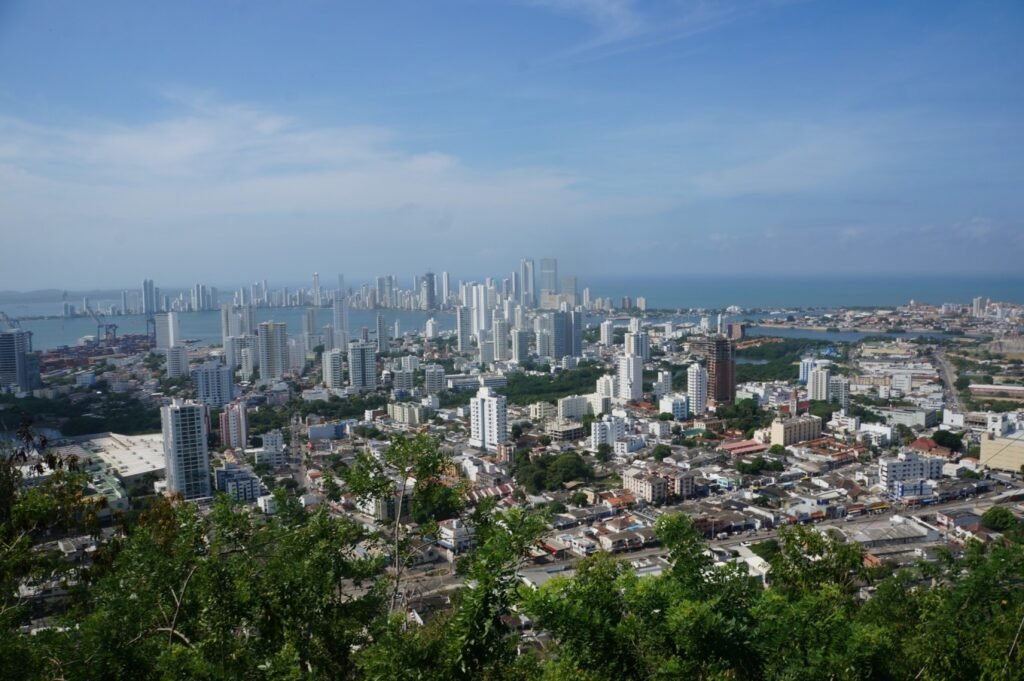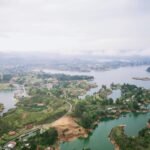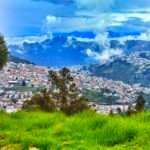At the southern edge of the vast Caribbean Sea lies the historic city of Cartagena. It serves as a major port in northern Colombia and is a renowned tourist destination. Founded in 1533, Cartagena is one of Colombia’s oldest cities and one of its most captivating, known worldwide for its ancient fortifications. It is often hailed as the most beautiful place in Latin America. During the mid-16th century, the city functioned as a transit port for the Spanish colonizers, used to transport plundered gold and silver from South America and as a hub for the slave trade. In the early 17th century, Cartagena was the third-largest city in Latin America but later declined in importance. However, after the discovery of oil fields in the Magdalena River basin in 1917, the city experienced a resurgence.
Cartagena is both an important northern port and a popular travel destination. Its seaside location gives it a long coastline with crystal-clear waters and golden beaches, making it a beautiful coastal retreat, a vacation hotspot, and a hub for conferences. Surrounded by water on three sides, the city’s lush greenery, ancient castles, and church spires blend seamlessly with the modern skyline of white and light-blue high-rises, creating a striking and harmonious landscape. Most of the city’s buildings were constructed between the 17th and 19th centuries in a Spanish architectural style. These two- and three-story structures may be low-rise, but they retain a timeless elegance.
In August 1985, UNESCO recognized Cartagena as a World Heritage Site, designating it as a treasure of human culture.
When our flight landed at 5:20 p.m., the sun was still shining. But by the time we collected our luggage and exited the airport, night had already fallen. For safety’s sake, we decided to take a taxi straight to our Airbnb. The friendly host warmly welcomed us and immediately took us up to the rooftop terrace to enjoy the city’s night view. The Airbnb we booked online was excellent—spacious rooms, uniquely decorated with plenty of natural bamboo, in a great location, reasonably priced, and even included breakfast.


The host’s daughter, Laisa, marked the location of the old town on Google Maps on my phone, and with the help of navigation, we kicked off our first day exploring Cartagena.
After walking just a few hundred meters, the San Felipe Castle (Castillo San Felipe de Barajas) came into view. The fortress is perched atop a twin-peaked hill, and standing on its walls offers a panoramic view of the entire city. The deep blue sea, the white church bell towers, the colorful houses, and the modern high-rises across the strait all come together, creating a stunning blend of classic charm and modernity in perfect harmony.


Climbing up the fortress walls offers breathtaking views of the city. From this vantage point, you can take in the entire historic district of Cartagena, where ancient castles, churches, and low-rise old houses blend seamlessly together. Every street feels like a picturesque scene. Beneath the fortress lies an intricate network of tunnels, giving you a glimpse of what it must have been like when the place was heavily guarded by soldiers in its heyday.


The Square Below the Castle
Leaving the castle, we followed the navigation route and continued onward. After crossing a bridge, we entered charming streets and alleys with a distinct Spanish flair. A yellow, triple-arched gate marked the division between the outer city and the inner city, with the inner city offering even more charm.
By our standards, it feels more appropriate to call these streets “alleys”—they’re narrow enough to evoke the vibe of Europe, where even the smallest streets allow cars to pass. However, most of them are one-way, with very few designated pedestrian-only streets.


At midday, the temperature soared past 34°C (93°F), and the direct sunlight made it unbearably hot. After lunch, we wanted to find a place to sit—not only to escape the midday heat but also to rest a bit before continuing our afternoon exploration.
We spotted a building that looked somewhat like a church. The Spanish sign above the entrance seemed to read Bolivian National University of the Arts. It looked like a decent spot to sit and take a break.
The building was designed in a courtyard style, with a large open patio in the center. The hallways were lined with benches, and several young people, likely students, were sitting directly on the floor, which was cooler. A few students came over and sat near us, and after exchanging greetings, we struck up a conversation.
They told us they were vocal students from the music department, with two of them pursuing master’s degrees. When we asked about life after graduation, they explained that becoming a high school teacher earns about $300 a month, while university professors can make around $1,000 per month. In contrast, factory workers typically earn about $200 a month. With wages like that, they remarked, the $8 we spent on lunch wasn’t exactly cheap. “Money isn’t everything,” I said, to which they nodded in agreement, adding, “but it’s hard to get by without it.”


Before we knew it, more than an hour had passed, and we had successfully avoided the worst of the midday heat. After bidding farewell to the young students, we continued our exploration of the inner city.
Following our pre-planned itinerary, we selected a few key sites to visit today, with La Popa Monastery (La Popa de La Galera) at the top of the list. The monastery is located on La Popa Hill, southeast of Cartagena, and navigation showed it would take about 39 minutes on foot.
We reached the base of the hill quickly, but the route passed through a hillside neighborhood of shantytowns. Taking the advice of a police officer on the roadside, we decided to take a taxi to go up and down the hill.
La Popa Hill is the highest point in the Cartagena area, and the monastery at its summit is a charming and well-preserved site. From the monastery’s observation deck, we enjoyed a stunning panoramic view of the entire city, with Cartagena’s beautiful landscape stretching as far as the eye could see.


To the north of the hill lies a beautiful harbor and the vibrant cityscape, while to the south stretches a run-down slum, creating a stark contrast between the two sides. The city’s wealth gap becomes strikingly evident from this vantage point, where the polished urban landscape on one side sharply contrasts with the impoverished neighborhoods on the other.
Perched atop a 150-meter-high hill, La Popa Monastery was built in the early 17th century by teachers from the Augustinian order. The monastery is beautiful, featuring a charming chapel and a courtyard filled with vibrant flowers.


After finishing our visit, the taxi took us back to the city center. The rest of the sights we planned to explore were all within the old town, making it easy to continue our day of sightseeing.
We made our way through several must-see attractions, following our plan. First, we visited the San Pedro Claver Monastery (Plaza San Pedro Claver), known for its historical significance. Next, we explored the Palace of the Inquisition (Palacio de la Inquisición), which offers insight into the darker side of history. Finally, we stopped at the Heredia Theatre (Teatro Heredia), a beautifully restored venue. All of these places are highly recommended online, and they certainly lived up to their reputation.
Today, I’ll be spending the entire day experiencing life as a coffee farmer.
Coffee is an art, and as a beginner in the world of coffee, spending a day as a coffee farmer deepened my love for it.

The process diagram of coffee from cherry to completion of roasting

Colombia is one of the top coffee exporters in the world, with numerous coffee farms scattered throughout the Andes Mountains. This time, we drove to a coffee farm in Choachí to learn about the life of coffee.


Coffee cherries on a coffee tree don’t ripen at the same time. You need to start from the top of the tree and work your way down and from the inside out, picking the red cherries and putting them into a collection bucket.


The harvested coffee cherries go into a depulper, which gives you sticky coffee beans. The depulper spits out the coffee fruit pulp from the other end.

Each coffee cherry contains two coffee beans, which are the seeds of the cherry.


The container filled with coffee beans, which have had the fruit pulp removed, is placed in a larger barrel and covered with more coffee beans. After 24 hours of fermentation, when the beans in the container have sunk by one-third, fermentation is complete.
Next, add water, stir, and wash off the mucilage from the coffee beans.


Place the washed coffee beans in a drying shed for 15 days, constantly raking them. Also, sort out any bad or low-quality beans.


After drying, first remove the silver skin, then package the beans and send them to the city for roasting.



